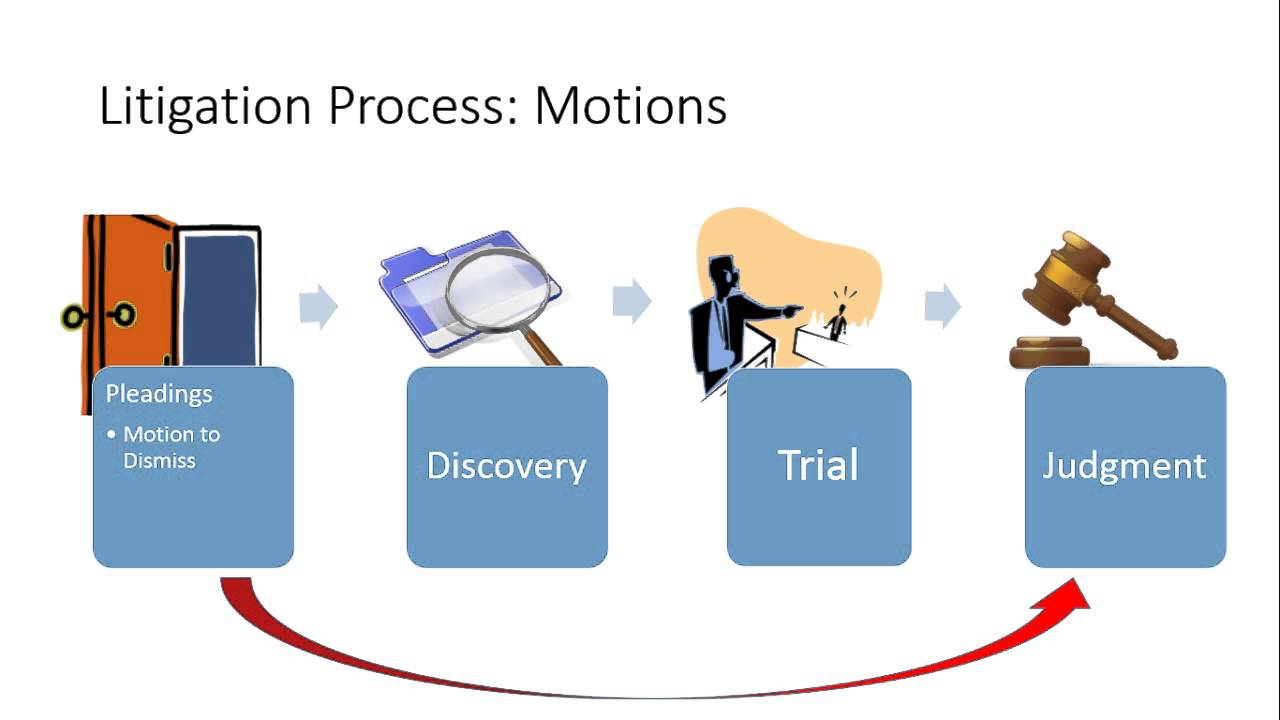
An Overview of the Litigation Process
Litigation is more than just arguing in court, despite what television and movies might show. Most of the litigation process occurs outside of court, but is just as important. This article will provide a brief start-to-finish overview of what exactly happens in a lawsuit.
Pre-Trial
Before a trial even begins, several things occur. First, the lawsuit is initiated by the plaintiff by filing a Complaint and serving a copy of the Complaint on the defendant. The Complaint is a pleading which is basically a list of reasons as to why the plaintiff is suing the defendant. Once the Complaint is served on the defendant, the defendant now has two options. The defendant can respond to the Complaint with an Answer, which is a response to the plaintiff’s allegations in the Complaint. Alternatively, the defendant can attempt to throw out the case based on an argument that the Complaint is legally inadequate. However, it’s very rare for a court to dismiss a case at this stage. What’s more common is that, assuming the defendant is right about the Complaint being legally inadequate, the Court will allow the plaintiff to fix the Complaint and re-file it.
Once the Complaint is filed, the discovery process usually begins. Discovery is the pre-trial exchange of information and evidence by parties to a lawsuit pursuant to rules of civil procedure. Most discovery is obtained in the form of interrogatories (questions asked to the other party), requests for production of documents (documents requested from the other party), depositions (in-person interview given under oath) and subpoenas (request for information or documents from a party usually not involved in the lawsuit).
In small and simple cases, the discovery process can cost very little and take a few weeks to complete. In major or complex cases, discovery can cost hundreds of thousands of dollars and take years to complete. After discovery is complete, the trial can begin.
Trial
Trials can be decided by either the Judge (bench trial) or the jury (jury trial). In the case of a bench trial, the Judge will serve as both the decision maker and the “umpire” for the trial, making sure legal and court rules are followed. With a jury trial, the Judge serves only as the “umpire,” with the jury being the decision maker.
Trials begin with opening arguments, with each side giving an introduction to the case and an outline to what each respective side will argue and prove. Next, the plaintiff will present her or his case, submitting evidence in the form of tangible objects, documents or testimony. After the plaintiff presents her or his case, the defense can present her or his case. Once the defendant is finished, closing arguments are made and either the Judge or jury will make a decision.
After a decision is made, each party will usually have the right to appeal, but only on certain issues. Generally speaking, only errors of law can be appealed. For example, if the losing party believes the Judge allowed inadmissible evidence to be considered by a jury, that can usually be appealed. However, if the losing party believes the jury was wrong in believing the testimony of one witness over another, then that cannot be appealed. Depending on the court and case complexity, a lawsuit can last less than a year from Complaint being filed to completion of trial. Other times, it can last for years, especially if there is extensive discovery or an appeal is made. However, even in these extreme cases, the trial itself will usually last no more than a week
The above is a very generalized step-by-step explanation of the litigation process. For more information about the litigation process, please contact us.




